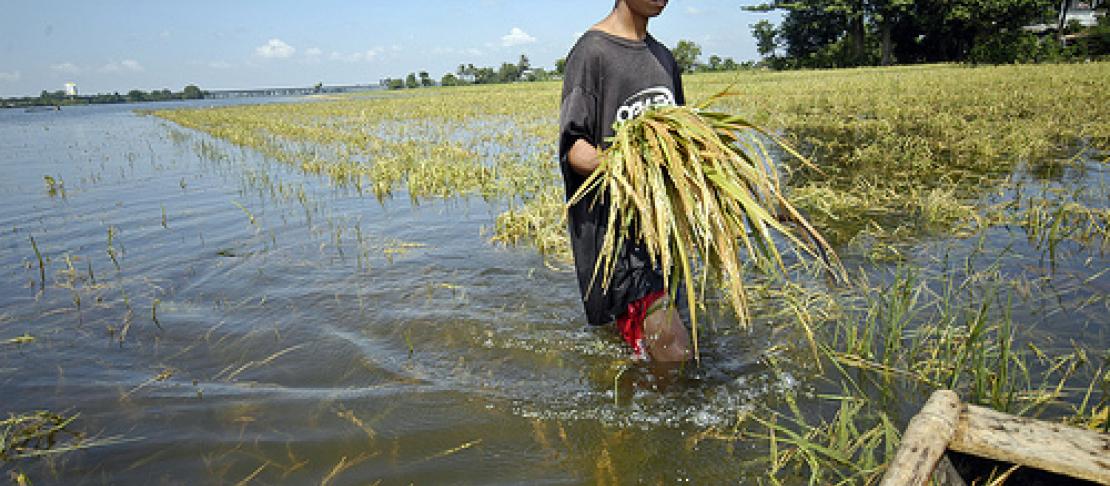Climate shocks may unlock local innovation

by Sonja Vermeulen
Over 2011, natural disasters caused all-time-high global economic losses of US$380bn, easily surpassing the previous record of $220bn set in 2005. While the most expensive losses were due to the earthquakes in Japan and New Zealand, weather-related catastrophes, many linked to La Niña, were numerous and widespread: a major drought in East Africa, a glut of Atlantic tropical cyclones, and the worst floods in decades in parts of Thailand, Cambodia, Namibia, Brazil, the USA and Australia.
Extreme weather events like heatwaves, droughts, storms and floods are expected to increase in frequency or severity – or both – with climate change. Past catastrophes provide invaluable lessons for future preparedness. Overall, natural disasters have both negative and positive impacts on national economies. Particularly ambiguous is their relative impacts on poor rural households. One view is that climate shocks knock back the ability of poor farmers to reinvest in future seasons; risk-protection measures such as crop insurance or social welfare can help. Another view is that shocks provide new opportunities for the poor and that risk-protection programs are a disincentive to them to adapt to longer-term environmental changes.
The article Climate-related disaster opens a window of opportunity for rural poor in northeastern Honduras, by Kendra McSweeney and Oliver Coomes, provides original evidence and insights in support of the “new opportunities” view. In 1998 Hurricane Mitch destroyed 80% of rice fields and 95% of cocoa plantations in Krausirpi, Honduras. Manioc and banana fields were also ruined. Local communities experienced severe hardship and deaths. Nonetheless, recovery was rapid: per-household rice harvests were back to pre-Mitch levels within four years.
A closer investigation reveals how there can be direct trade-off between this year’s food security and longer-term resilience to climatic shocks. Cocoa production, promoted by development agencies, increased incomes, but inadvertently made the community more vulnerable to climate shocks, by concentrating production on one crop and on a floodplain. Cocoa also contributed to increasing inequality in land holdings, as wealthier households could afford expansion, while land-poor households, nearly half of them headed by single women, were left behind.
Hurricane Mitch provided new opportunities for these households. The same qualities that had kept them land-poor, and hence most vulnerable to the shock, now provided an advantage. Being younger and with smaller families, they were better able to get paid work. Slowly and cumulatively they also staked new claims in land, tripling their average holdings from 3ha to 9ha, and creating an innovative and more egalitarian land tenure system in the process.
Of course these experiences do not mean that climatic catastrophes are good for poor people. But they do support the idea that local innovation and flexibility, not top-down intervention, are the best routes to adaptation and resilience. To return to the example of Japan, natural disasters have been understood for centuries to redistribute wealth from the wealthy who lose property to the poor who earn wages to rebuild it; arguably social capital is the essence of their adaptive capacity.
Links
- Press Release: Review of Natural Catastrophes in 2011: Earthquakes result in record loss year. 4 January 2012. Munich Reinsurance.
- Popp, Aaron. 2006. The Effects of Natural Disasters on Long Run Growth. Major Themes in Economics, Spring 2006. Download PDF.
- McSweeney, Kendra and Coomes, Oliver T. 2011. Climate-related disaster opens a window of opportunity for rural poor in northeastern Honduras. PNAS vol. 108 no. 13 5203-5208. DOI: 10.1073/pnas.1014123108.
- Sand, Jordan. 2011. Diary: In Tokyo. London Review of Books Vol. 33 No. 9 · 28 April 2011, pp 34-35. (subscription required).
- Chavunduka, Charles and Bromley, Daniel. 2011. Climate, carbon, civil war and flexible boundaries: Sudan's contested landscape. Land Use Policy. Volume 28, Issue 4, October 2011, Pages 907–916. DOI: 10.1016/j.landusepol.2011.03.007. A discussion of how flexible institutions can aid adaptation in the context of substantial social discord.
This is the February 2012 installation of AgClim Letters, a monthly e-bulletin on science and policy written by Sonja Vermeulen, Head of Research for CCAFS. Sign up to receive AgClim Letters bulletin and read past bulletins Your comments are welcome below.